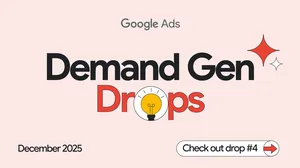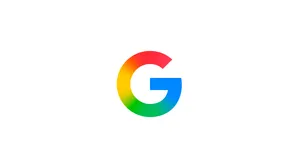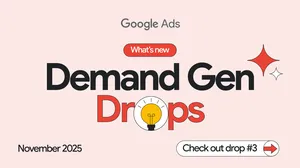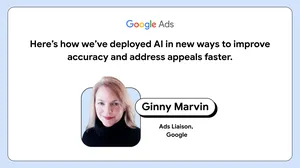Make every marketing dollar count with attribution and lift measurement

Understanding how each media touchpoint contributes to your goals can mean the difference between marketing that drives business growth and marketing that fails to deliver. To make every dollar count, you need tools that help you learn how people are responding to your ads, so you can take action to improve your results.
Today, we're announcing improvements to Attribution in Google Ads including coverage for YouTube ads and a significant expansion in the availability of data-driven attribution. We're also sharing updates to our lift measurement solutions including a new way to measure incremental conversions and an accelerated time frame so you get results even faster.
Measure more of your Google media
Attribution in Google Ads helps you understand the paths people take to complete conversions. It awards credit for conversions to different ads, clicks, and factors along the way, so you can focus your investments on the media having the biggest impact on results.
Earlier this year, we launched a new look for attribution reports to help you get important insights faster. And with more people turning to YouTube as we spend more time at home, we added YouTube to attribution reports, to help you better understand the role video plays in your customer’s path to purchase.
fuboTV, a live TV streaming platform that includes sports, news, network television and movies, used attribution reports to understand how customers interact with their YouTube and Search ads before converting. They saw that for every conversion YouTube drove directly, it assisted 2 more conversions on Search. “These insights helped us see the full value of video. This enabled us to start thinking about YouTube and Search media in one view and take into account blended cost-per-acquisition goals that more accurately reflect the total impact of our ads at driving conversions,” said Antonio Armenino, Search and Display Lead at fuboTV.
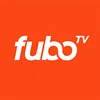
YouTube ads in attribution reports is now in beta. Eligible advertisers will be able to opt-in within the Measurement > Attribution section of Google Ads to see YouTube ads in the Top Paths, Assisted Conversions and Path Metrics reports, alongside Search and Shopping ads. And to give advertisers a more holistic view of Google media, we’re also adding Display ads to attribution reports in the coming months.
Data-driven attribution is now available to more advertisers
Data-driven attribution (DDA) is a type of attribution model that uses Google’s machine learning to determine how much credit to assign to each ad interaction along the consumer journey. Trained on and validated against incrementality experiments, data-driven attribution gives credit based on the incremental impact of your ads. It continuously analyzes unique conversion patterns, comparing the paths of customers who completed a desired action against those who did not, to determine the most effective touchpoints for each business. DDA is our recommended attribution model because the constantly updating, machine learning-based approach ensures you are always getting accurate results that account for the latest changes in consumer behavior.
DDA requires a certain volume of data in order for us to build a precise model, but to make DDA available to more advertisers, we’re lowering the data requirements for eligibility. With this change, each conversion action in your Google Ads account that has at least 3,000 ad interactions and at least 300 conversions within 30 days will be eligible for DDA. This is possible due to ongoing improvements to the machine learning algorithms we use to train data-driven attribution models, so we can do more with less data without sacrificing precision.
Use full-funnel lift measurement to validate and implement findings
Attribution is best for day-to-day, always-on measurement and is effective for setting ad budgets and informing bid strategies on a campaign or channel level. Businesses that are prepared to move beyond DDA can use randomized controlled experiments—also known as incrementality or lift—to set channel-level budgets or to optimize future campaigns.
For years, marketers have used Brand Lift and Search Lift to measure the impact of YouTube ads on perceptions and behaviors throughout the consumer journey, from brand awareness to purchase intent, and lift in organic searches on Google and YouTube. Today, we're announcing that Conversion Lift is now available in beta. Conversion Lift measures the impact of your YouTube ads on driving user actions, such as website visits, sign ups, purchases and other types of conversions.
Each of Google’s lift measurement tools use best-in-class methodology to ensure accuracy and precision, and that no additional costs are incurred to run these experiments. In addition to delivering accurate, full-funnel measurement, we’re making changes to our lift measurement tools so you get results even faster.
For Brand Lift, we recently launched accelerated flights so you can get the brand perception metrics you care about sooner, with the ability to re-measure over time. We’re also reporting Search Lift and Conversion Lift results as soon as they become available, with flexible study durations and integrated daily reporting, so you can see changes more frequently and over time. Last, you can now run Brand Lift, Search Lift and Conversion Lift measurement on the same campaign, so you can get fast, actionable results across the entire consumer journey.
Fiverr, one of the world’s largest marketplaces for freelance services, wanted to drive both consideration and website engagement. They ran YouTube ads to reach audiences throughout the funnel, and used Brand Lift, Search Lift and Conversion Lift to measure full-funnel impact. They saw that their first test delivered strong relative lift, with a 10 percent lift in consideration, 62 percent lift in searches on Google and YouTube, and 30 percent lift in new users. “We received excellent insights from this campaign. Now that we’ve seen success in reaching first-time users throughout the funnel, our next step is to develop messaging for user retention,” said Tal Moravkin, Creative Manager at Fiverr.

We look forward to seeing these insights help you understand how people interact with your marketing throughout the consumer journey. Looking ahead, we’re working to bring more channels and formats into attribution and lift measurement, so you can get better insights to make every marketing dollar count.

